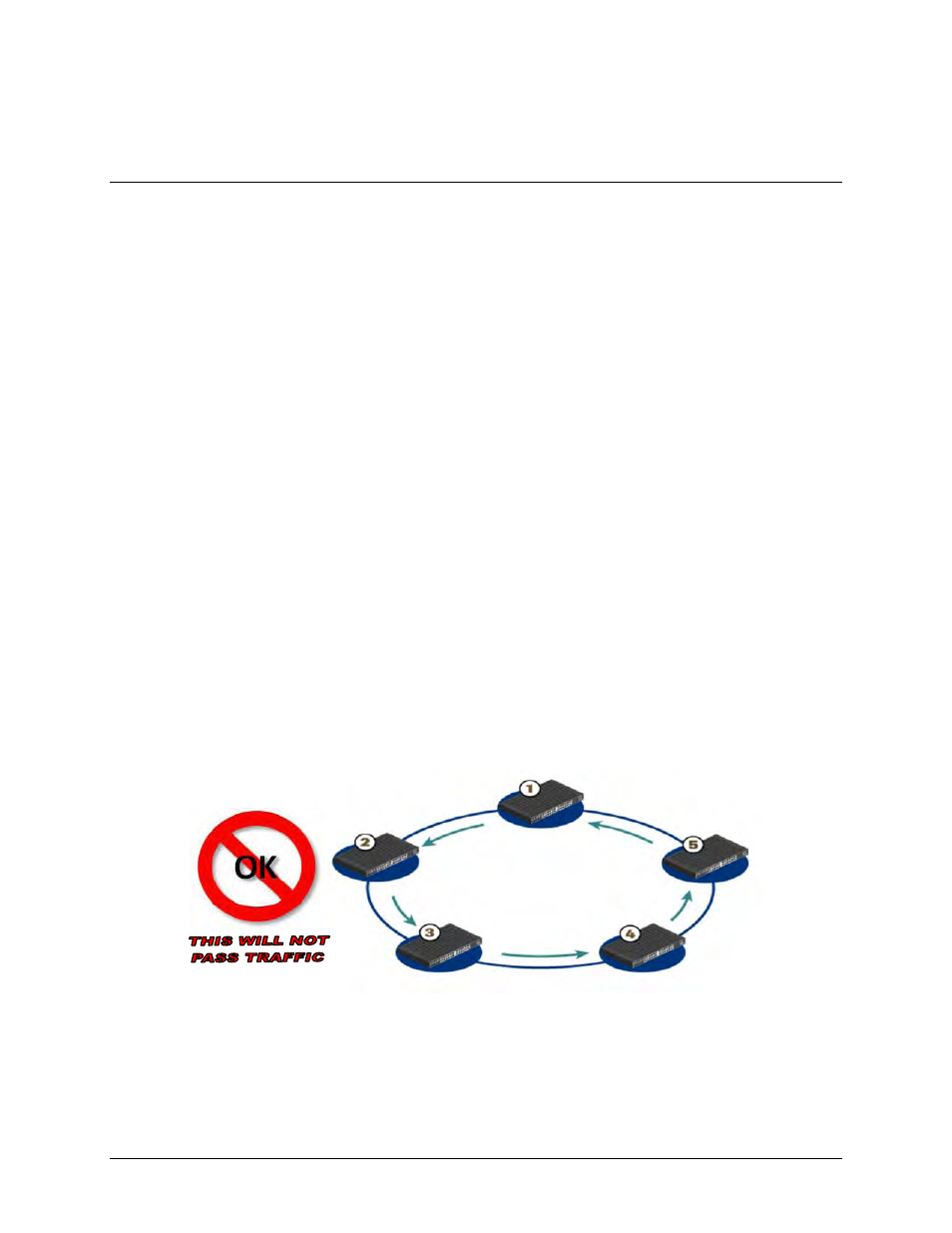A.3 ethernet configuration examples, A.3.1 ethernet network overview – Comtech EF Data CRS-300 User Manual
Page 234

CRS-300 1:10 Redundancy Switch
MN/CRS300.IOM
Appendix A
Revision 19
A–2
coming in on ‘Port 2’, it now knows that ‘Machine A’ is connected to that port, and that traffic
destined for ‘Machine A’ needs to only be sent to that port and not any of the others.
A.3 Ethernet Configuration Examples
This section explains the problems with Ethernet Networking Loops, and how to properly design
applications architecture for handling Standard traffic and Split-path traffic. Standard traffic is
defined as Rx and Tx Ethernet traffic using the same port on the same router or switch, whereas
split-path traffic is Rx and Tx Ethernet traffic using different ports of the same router or switch.
Each application also has CRS-300 Redundancy applications examples, with subsequent sections in
this appendix providing examples of applications architecture designed to handle near-to-far end
Ethernet network configurations. This includes:
•
Sect. A.3.3 Hub-to-Hub With Standard Traffic Using Routers
•
Sect. A.3.4 Hub-to-Hub With Standard Traffic Using Switches
•
Sect. A.3.5 Hub-to-Remotes With Standard Traffic Using Routers or Switches
•
Sect. A.3.6 Hub-to-Remotes, Split-path Traffic Using Routers (Point-to-Multipoint)
•
Sect. A.3.7 Hub-to-Remotes, Split-path Traffic using Switches (Point-to-Multipoint)
A.3.1 Ethernet Network Overview
When placing modems in a network, there are a number of issues that must be addressed – first
and foremost on the list of concerns is whether implementation of the switches in the network
will cause a Networking Loop. This is problematic because a Networking Loop will cause a
Broadcast Storm, which shuts down the network and causes harm to devices in that network.
Figure A-1. Networking Loop With Switches
